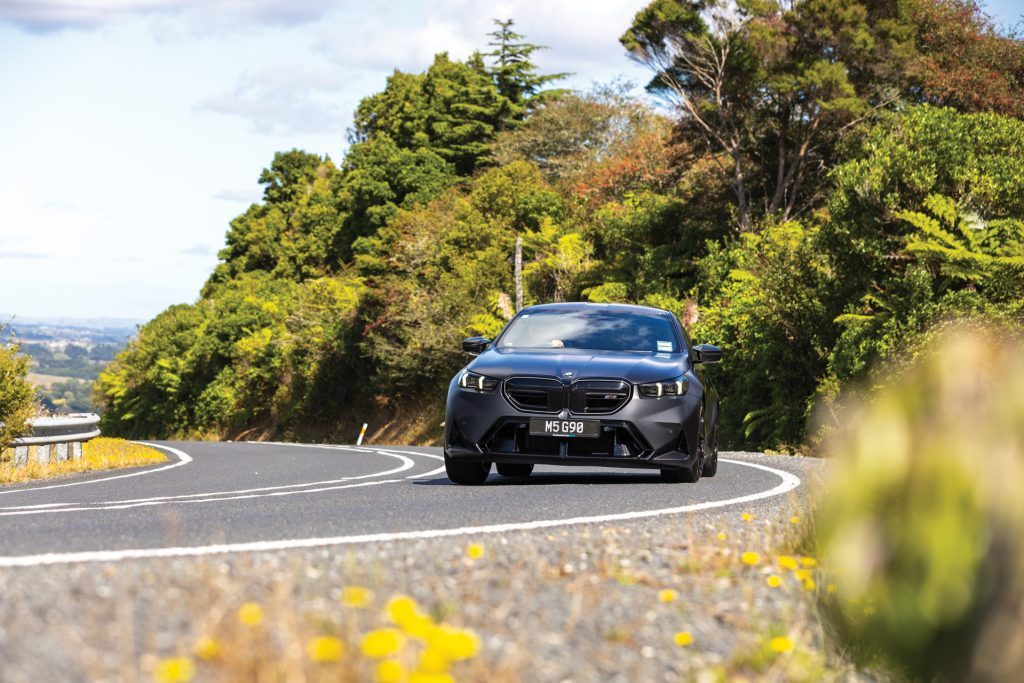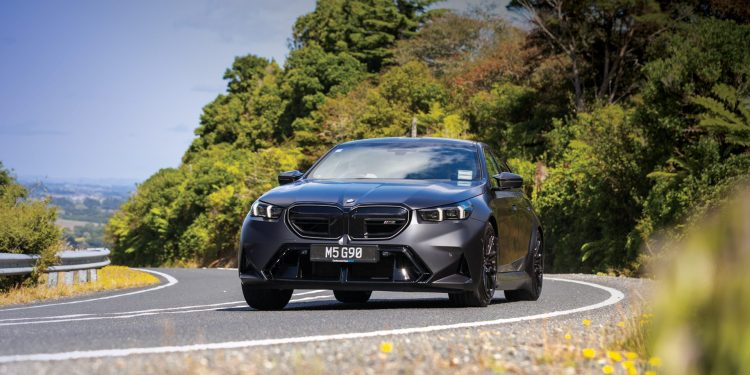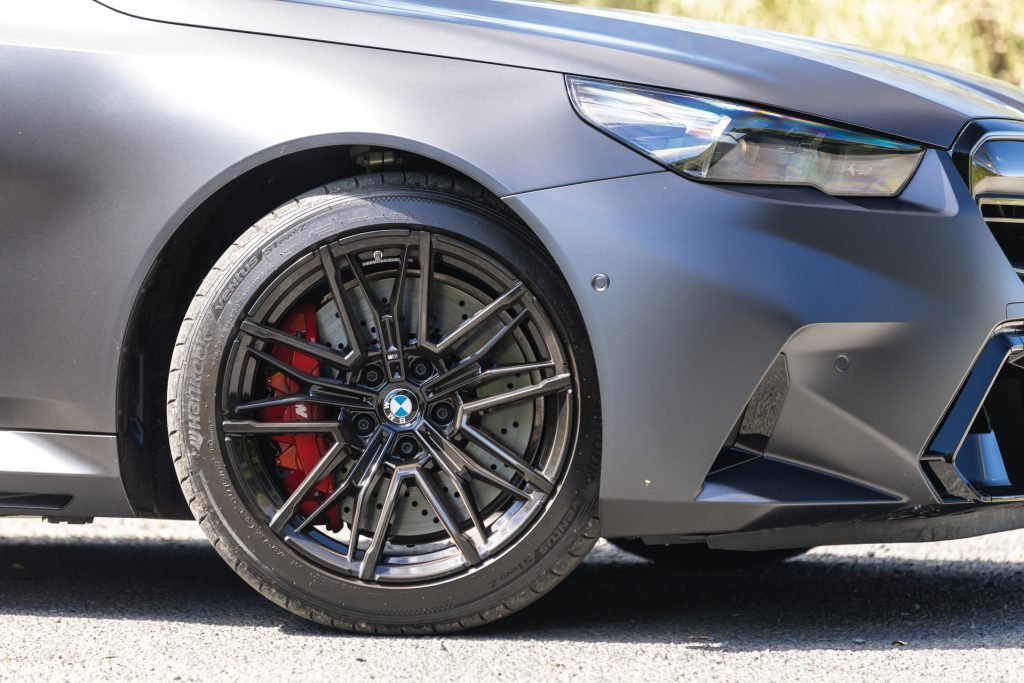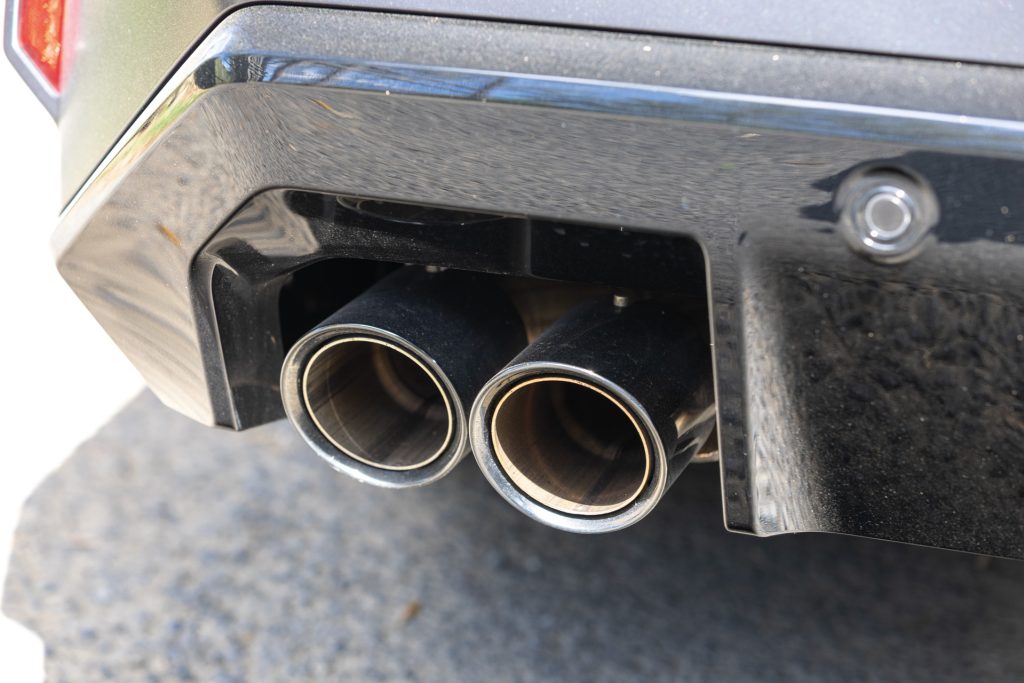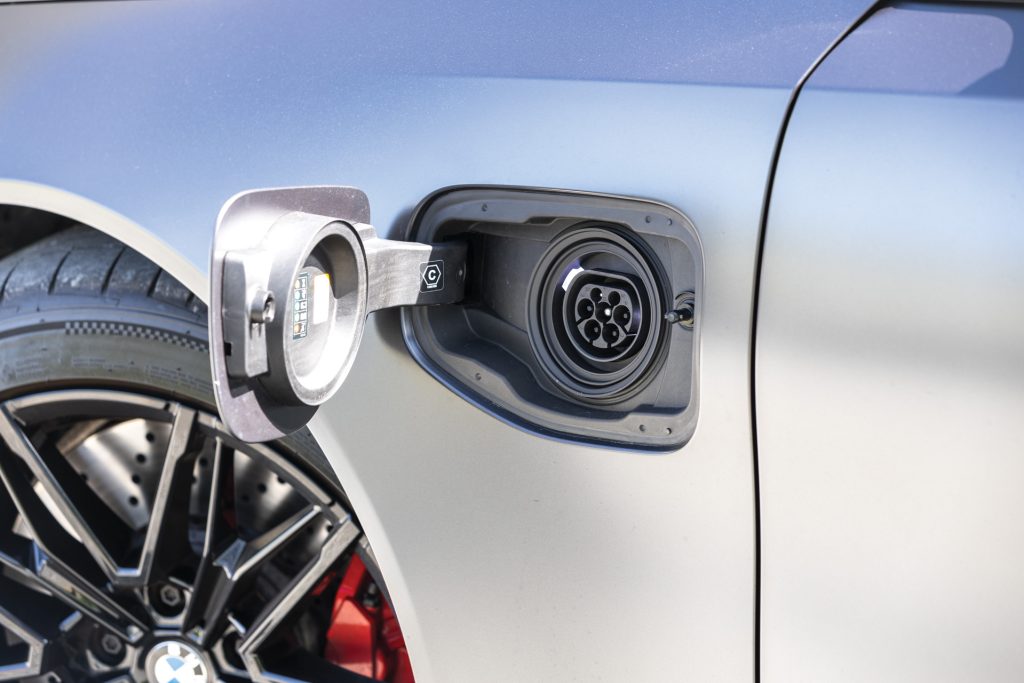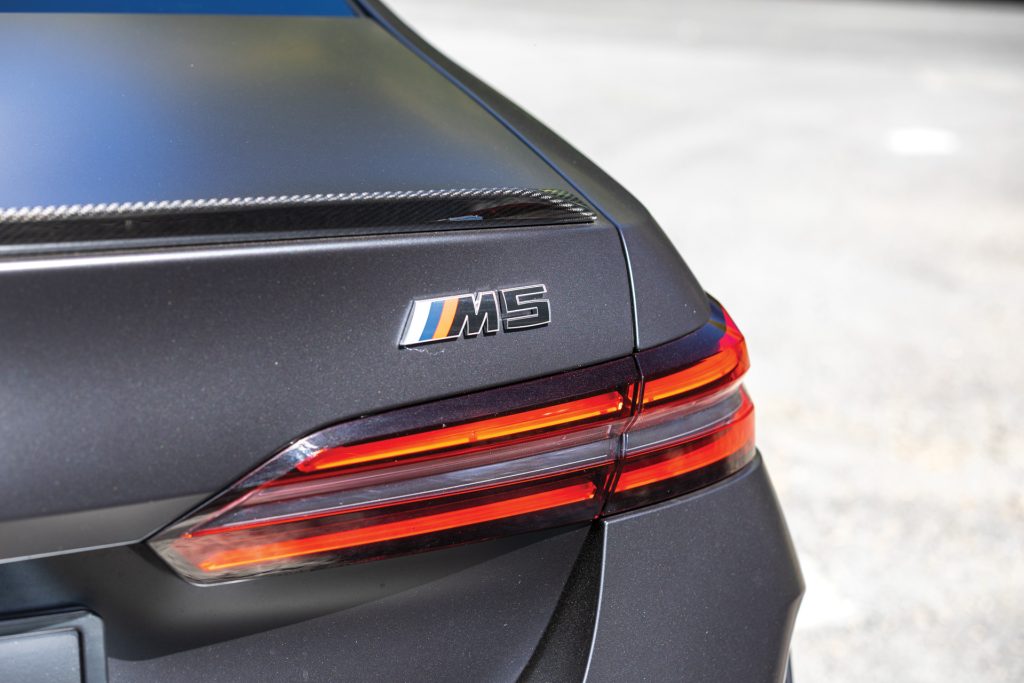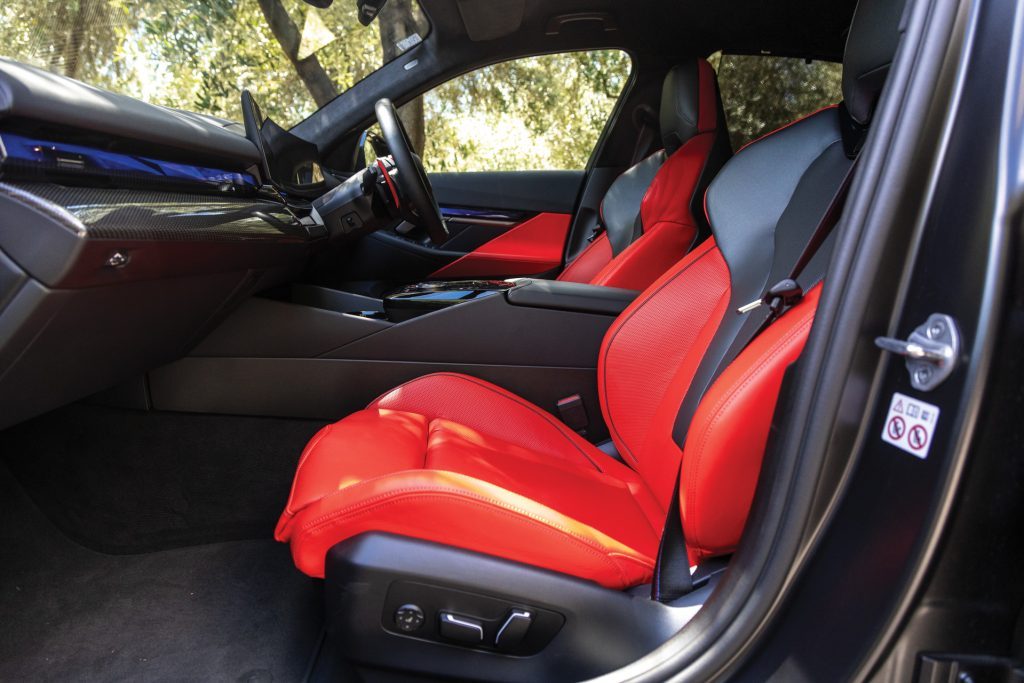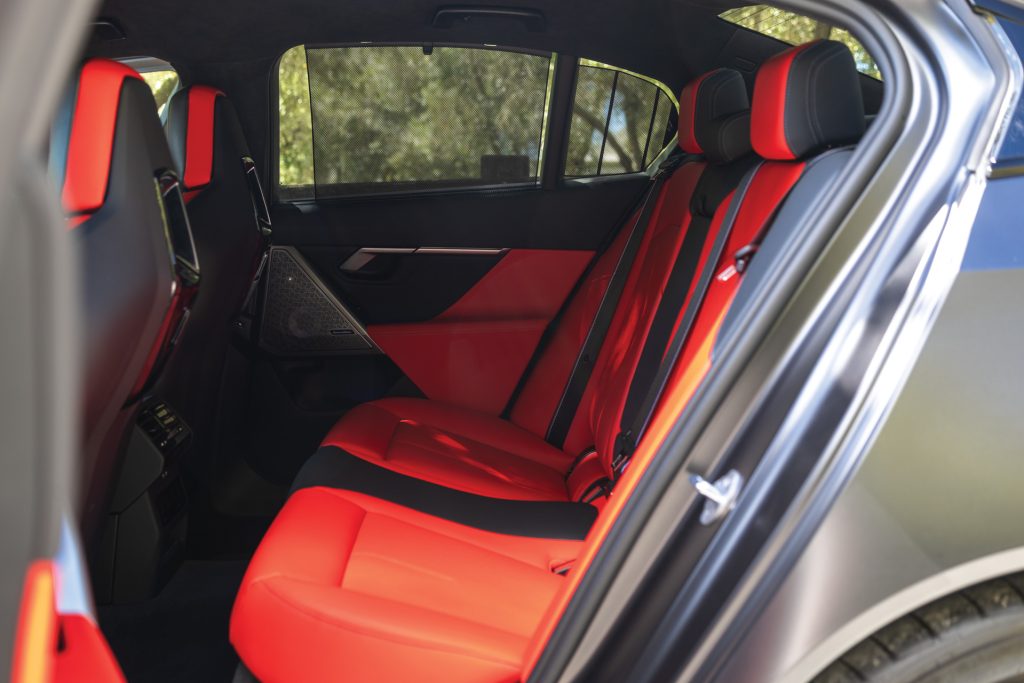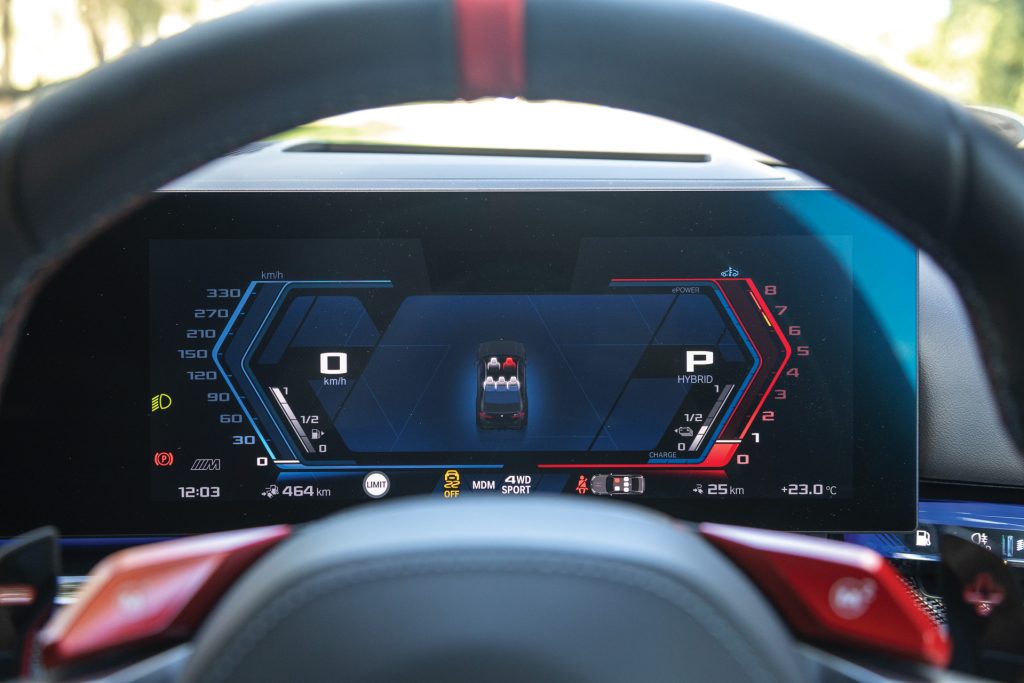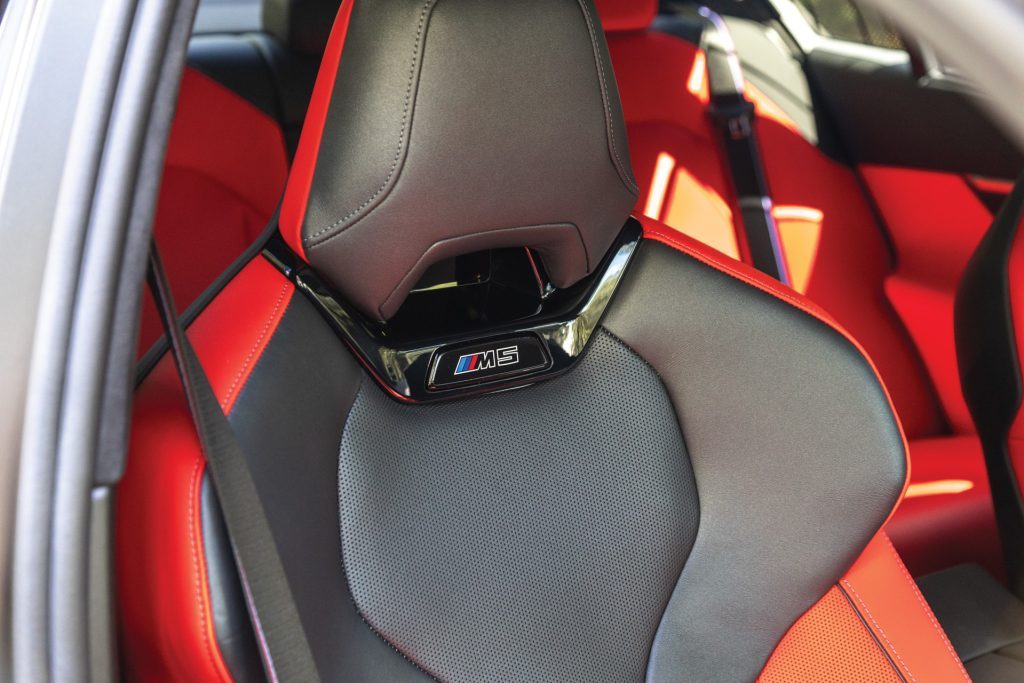2025 BMW M5 Review
Words: Peter Louisson | Photos: Alex Schultz
BMW’s top sports saloon continues to surprise, each generation delivering something new. This time it’s electrification, which brings 1000Nm to the party.
The latest M5 Sedan has arrived, now in its seventh generation. Known as the G90, it differs from all its forebears in that it is the first to use electrification in its forty-year history.
This is a PHEV because it can travel for around 70km (67 claimed) without needing the engine to switch on, and it has a separate flap for charging. That’s all thanks to an 18.6kWh battery and a 140kW motor integrated within the eight-speed automatic transmission. Its official torque output is 280Nm but BMW says that with pregearing, the effective torque at the transmission input is 450Nm. Whatever, in total this is good for 535kW and a round 1000Nm of torque. That’s close to the Bentley Continental GT Speed’s output (575kW and 1000Nm).
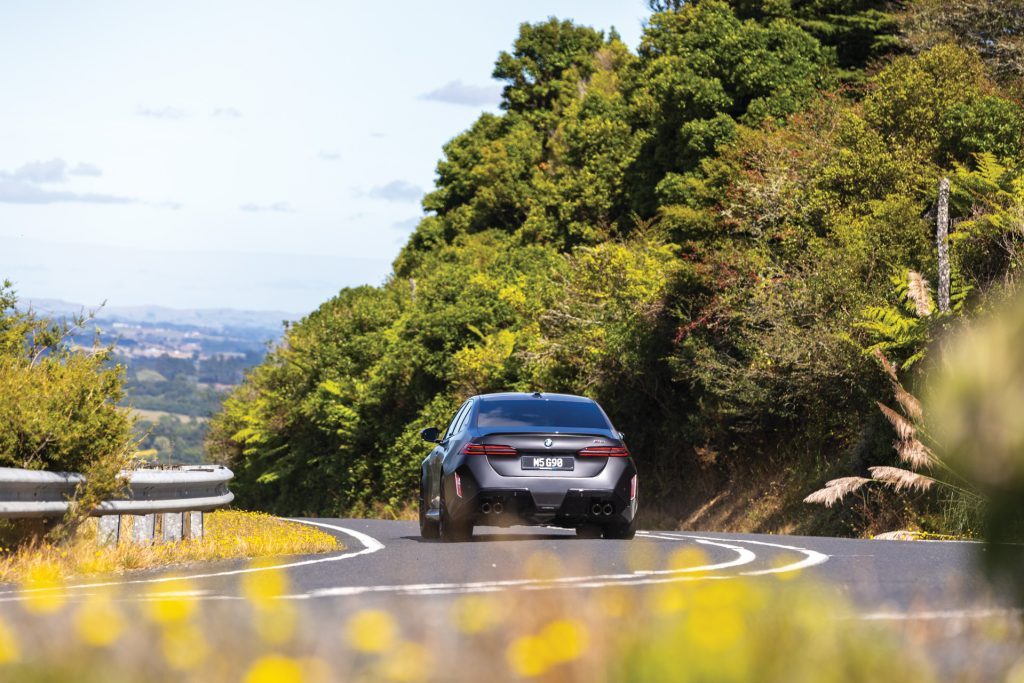
Hasty but heavy
Which means the M5 should go like the dickens, right? Well, yes and no. The previous 460kW version had a 0-100km/h claim of 3.3sec while this one is rated at 3.5sec. What gives? Turns out adding electrification has its upsides and downsides. Yes, it uses less fuel, around the 11s in our hands, 8s long term where its predecessor was in the high teens much of the time.
But the downside is its overall weight. That’s up by over 400kg to 2435kg. That’s what happens when you add a decent sized motor and a modestly sized lithium-ion battery. Coincidentally, again, the Conti GT Speed weighs virtually the same (2459kg). Surprisingly it is quicker, which we’d put down to slightly more power and its eight-speed twin-clutch transmission. It managed a 0-100 in 3.1sec to the M5’s 3.4sec time. There was a 0.2sec difference in the overtake, (1.70 vs 1.88sec) both blazingly quick, with the Bentley again the faster.
We’d rather they were superquick on the overtake than in the stoplight GP anyway. We can also confirm that the extra weight of the M5 is evident in the final performance criterion, which would be how it stops in emergency situations. Big EVs take lots of stopping and so do big PHEVs. We eventually managed a best figure in the 33m bracket, but most were closer to 36m. If you’re thinking track work, perhaps consider the $19k carbon ceramic brake option.
Fuel use down
The main radical improvement then is its fuel use, not that owners will necessarily think that this is the be-all and end-all. Get this: for the first three days we drove this the fuel gauge never moved off full until 168km had passed. And it kicked off with around 600km of range, not bad for something with near-supercar performance. What helped is that after the second day we used our portable charger to refill the battery overnight. And so there’s another potential 70km of running without the engine going.
BMW has omitted a facility that allows the engine to recharge the battery. You can gain a kilometre or two but only from regen after long downhill stretches. But holding that charge is a bit of a trick too, if you need it for later use.
Seventy kays might not seem a whole lot in the scheme of things – some PHEVs are capable of close to 200km – but in regular driving the hybrid system seems to eke out plenty of distance by just gently using EV and the engine in combo. On the motorway this is generally EVing, unless you’ve told it not to, so it is supremely quiet in the way most previous M5s have never been.
Lots of hybrid modes
There are several M5 hybrid drive options available, one being electric and a couple being for enhancing either range or performance. We found in the Hybrid Dynamic mode that it would often flip back to electric only when I was trying to save that for in-town use. Moreover, the motor doesn’t have quite the sting of the engine, which is good for 430kW and 750Nm.
You’re looking at 140kW and 280Nm. This output is fine for around town but tyre-shredding it ain’t, figuratively speaking. You sometimes notice this when trying to overtake if it’s EVing. In some hybrid modes it won’t kick down and bring the motor online.
But all that EVing does pay off for efficiency, with a long term average in the 8L/100km area. We saw it down into the sixes by using the appropriate hybrid mode. BMW reckons on figures in the late ones (rightcar 2.1L/100km) but that’s essentially in town when it’s mainly EVing. Highway figures are more like 8-10L/100km. And when mainly EVing, expect energy use of around 25kWh/100km.
In days gone by, M5 tests meant trips to the pump. But after the photo shoot south of Auckland and a weekend jaunt up north where we rejuiced the battery, I returned the M5 with just under a half a tank of gas and over 250km remaining. Previous M5s had a drinking problem where this seemed positively sober.
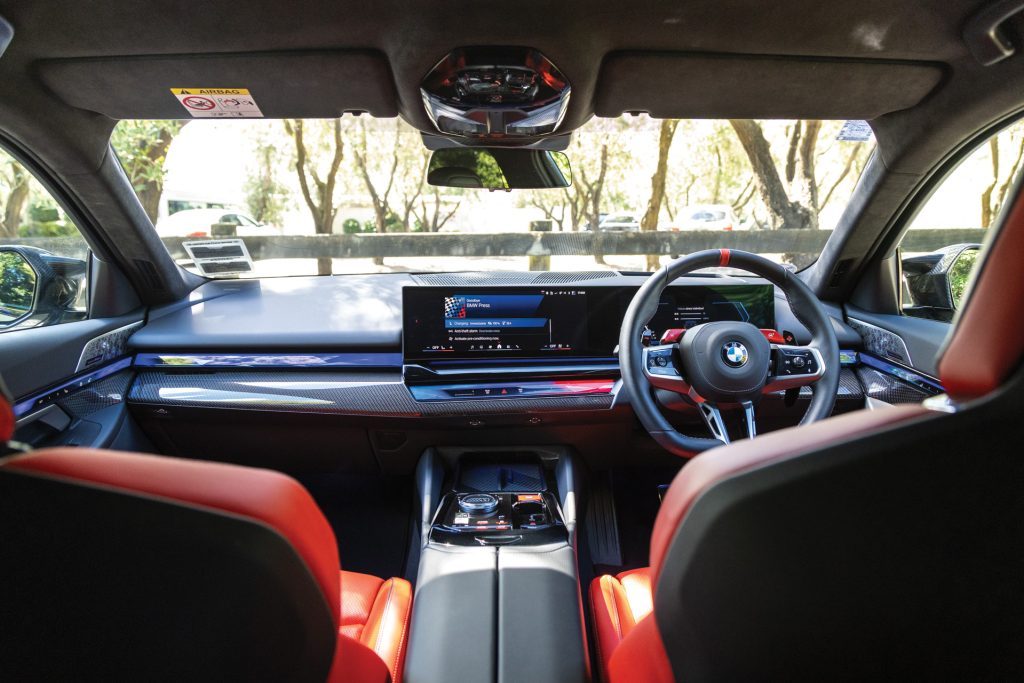
Looks like an M5?
The appearance is certainly out there, especially in flat black (‘frozen deep grey’, a $7100 cost option). It’s not quite as hard to keep clean as gloss black but there’s not much in it. The M5 looks smart in BMW’s Frozen Marina Blue metallic too.
Round the back is a quartet of pipes, and a small ducktail spoiler. Wheels are 20s and 21s, our car with Ventus S1 Evo Zs, 295/35s on the rear, 285/40s up front. They’re surprisingly quiet on the go, with a mean dB figure of just under 70.
Like most BMWs nowadays, when you approach the car with the proximity key, it unlocks automatically and vice versa when leaving it. This can occasionally be annoying, like when cleaning it – put the key elsewhere – but overall it’s a positive thing for peace of mind.
Open the driver’s side door and you’re presented with blood red seats, lots of carbon fibre trim and ambient lighting in the M colours. Seat belts are M sport items too. It sure does scream sports. The seats themselves are wonderfully comfortable, especially after giving the lumbar pump what for. They dive way low too, and well they should in a sports sedan. Despite the M5 being 5.1m long, the room in the back is only moderately generous. But the boot space kind of compensates at 466L; it goes way back in, almost too far to reach for stuff up the front. And the boot lid is powered, which you might expect in a $244,900 car.
On the whole this is a relatively straightforward machine to drive with the rider that it does take a bit of learning, like all M5s. With M1 and M2 set-up buttons on the wheel, it’s simple enough to go from sport firm to town soft. Even getting launch control to work didn’t prove vexing as it sometimes has with past M cars.
Hit the big red square button and it either fires up the engine or the motor, depending on what buttons you have activated. Polite folk will select electric start up so as not to annoy the neighbours in the morning. Unless they ask you to, and they will definitely want to talk to you about this car.
Dynamics weighed down?
A bit like the Bentley, you’d never really suspect it weighs in at almost 2.5 tonnes. And that’s the thing about low-riding vehicles with battery packs and dual powertrains. The great weight is well masked, and only really obvious in emergency stops. So despite the bulk this can still trip the light fantastic. Its grip is stellar, roll control assured, cornering speeds almost silly quick, and steering live and direct. Helping is an active M differential that distributes the power variably between the rear wheels, imparting rear-drive characteristics in an all-paw saloon. With adaptive damping, in the Comfort setting, the ride at open road speeds is almost civilised, which impresses for a sports sedan.
This isn’t a cheap car, never has been, at just over $250k. Some time ago it was $199k but now it’s electrified and is more complex but you do get 1000Nm bragging rights. And not many can claim that. It costs over twice as much to have the same Bentley GT Speed bluster.
Our M5 also featured adaptive suspension, and four zone climate air. The rear seat passengers get heated and vented seats, like up front. There’s a thumping B&W sound system with 18 speakers, BMW’s laser headlights, and lots of carbon goodies, inside for trim and on the roof for a little less weight (but not much in the scheme of things). The hood feels like it’s aluminium too. Our particular drive car had a trailer hitch that added $2600. It can tow up to 2000kg braked.
Once again, the M5 surprises and delights. Not all will think this represents progress. But for those who can see the merits of both power sources, the allure remains, even if the extra weight isn’t so welcome.
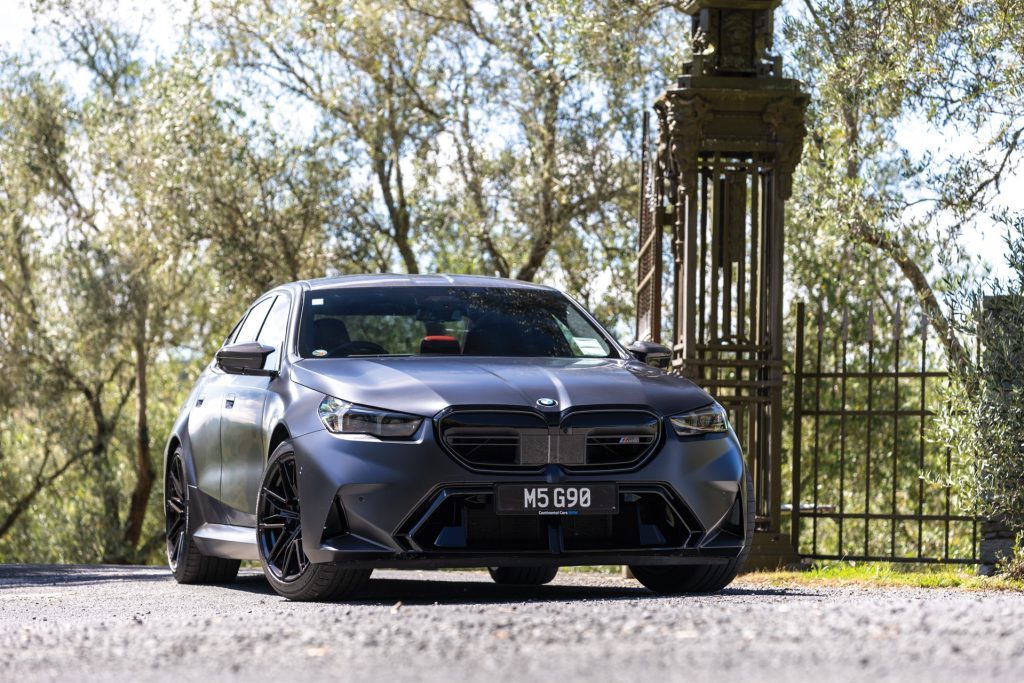
BMW M5
$244,900 / 2.1L/100km / 40g/km
0-100 km/h 3.40s
80-120 km/h 1.88s (52.6m)
100-0 km/h 33.74m
Speedo error 97 at an indicated 100km/h
Ambient cabin noise 69.8dB@100km/h
Engine 4395cc / V8 / T / DI
Max power 430kW@5600-6500rpm
Max torque 750Nm@1800-5400rpm
Motor output 140kW / 280Nm
Battery 18.6kWh
Range 67km
Hybrid System Output 535kW / 1000Nm
Drivetrain 8-speed auto / AWD
Front suspension Wishbones / sway bar
Rear suspension Multilink / sway bar
Turning circle 12.6m (2.55 turns)
Front brakes Ventilated discs
Rear brakes Discs
Stability systems ABS, ESP
Safety AEB, ACC, BSM, LDW, RCTA, ALK, AHB
Tyre size f-285/40R20 r-295/35R21
Wheelbase 3006mm
L/W/H 5096 / 1970 / 1510mm
Track f-1684mm r-1660mm
Fuel capacity 60L
Luggage capacity 466L
Tow rating 750kg (2000kg braked)
Warranty 5yrs / 100,000km
ANCAP rating Not yet rated
Weight (claimed) 2435kg
